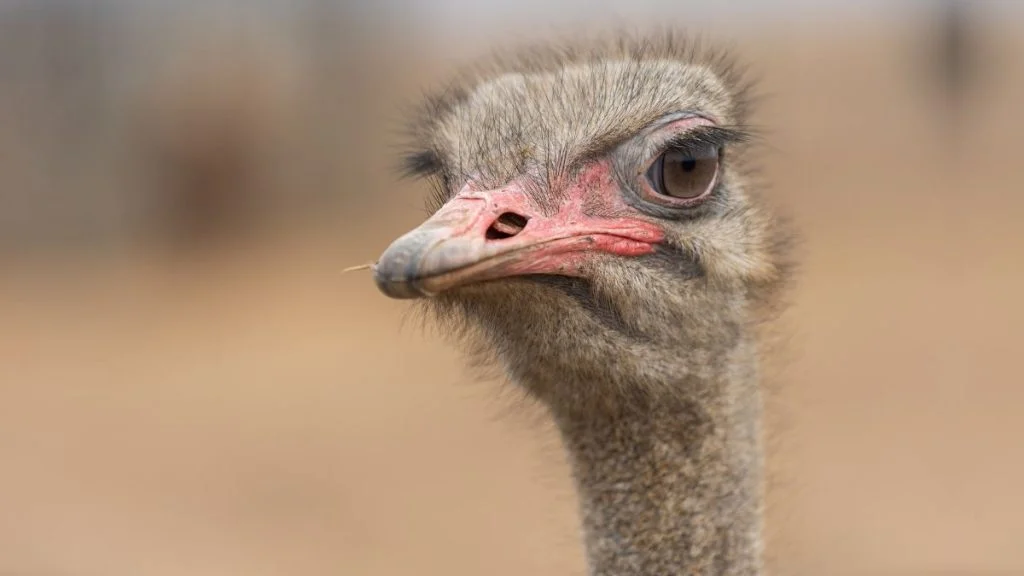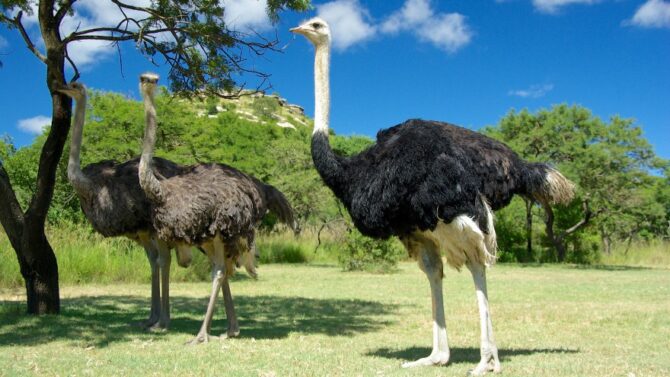The ostrich is one of the world’s most unique birds, and many things about it bring out curiosity.
Why can’t it fly? How does it run so fast? What does it eat? Is the head-burying myth real? Does it kick? Do ostriches have teeth? Do ostriches bite?
The last two questions form the basis of our article as it isn’t easily answered.
You can’t easily open the ostrich’s mouth to peep in and determine if it has teeth (we’d love to see you try), nor does it widen its mouth for onlookers to know what is within.
We do know birds don’t have teeth, but because the ostrich is unique, we expect something different, however.
Ostriches do not have teeth. They have other features that they use to eat, so they don’t need teeth anyways. That said, do not bring your hand too close to the beak or you may regret that decision.
Read on for more.
Do Ostriches Have Teeth?
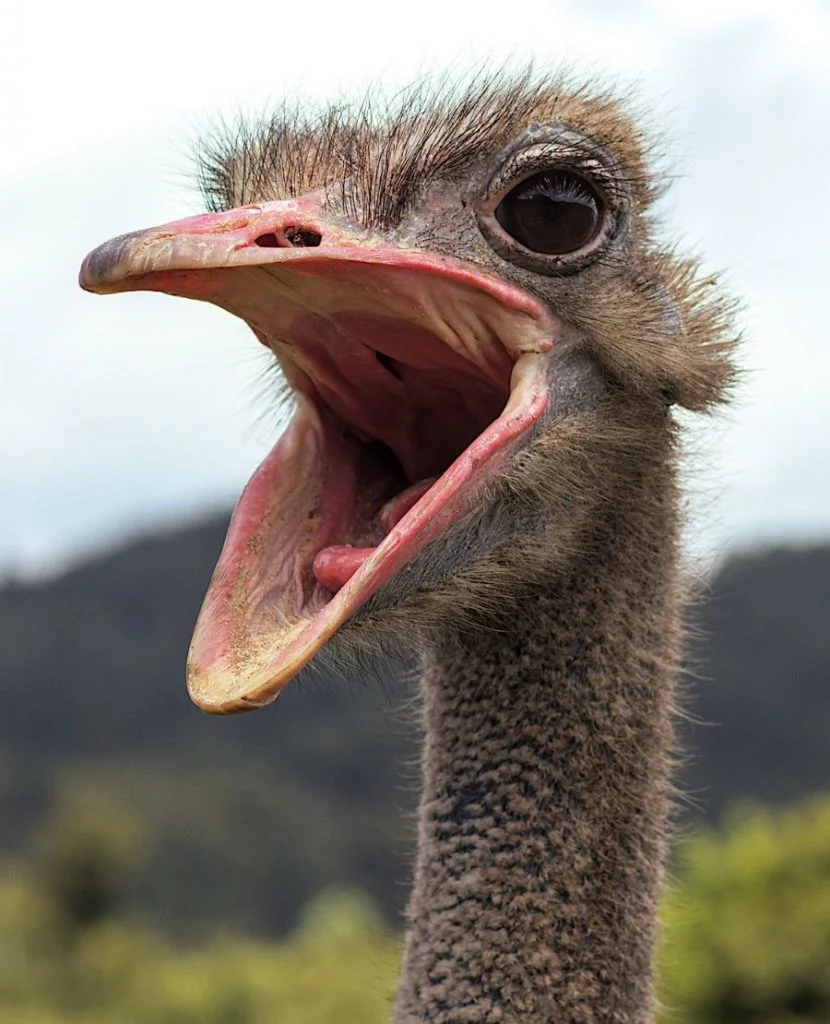
The ostrich is not different from other birds in this case as it also doesn’t have teeth.
Unlike humans and some other mammals like dogs, ostriches do just fine without teeth. They have other features that help when they eat, so the lack of teeth isn’t a disability.
Ostriches have a digestive system that more than makes up for teeth, as it works on breaking down food that the mouth couldn’t. Its mouth is also shaped to pick up food with ease.
What Do Ostriches Have in Place of Teeth?
To replace teeth, ostriches have large beaks. They share this trait with other birds that have beaks of various sizes.
The beaks are strong, long, and wide. They are usually colored in a grayish shade of pink.
Asides from the beak, ostriches also have a digestive system that breaks down food, just as we mentioned.
The intestine is tough, and the stomach contains rocks that help in digestion.
Ostriches have an instinctive method to ensure these rocks remain in their stomach, and we’ll look into that in the course of this article.
Before we get there, let us peer closer at the ostrich’s famed beak and its structure.
What is an Ostrich Beak Made of?
The two main components of an ostrich beak are calcium and keratin.
These components make the beaks as strong as teeth, and they can easily hold food in between them. It also uses the beak to find the food, and the beak can be a defensive weapon.
However, the beak isn’t impervious to pain, regardless of the calcium and keratin. Just as you’d feel pain if something should happen to your teeth, so do ostriches.
The beak has vessels and sensitive cells that can lead to pain if an injury occurs.
Do Ostriches Bite?
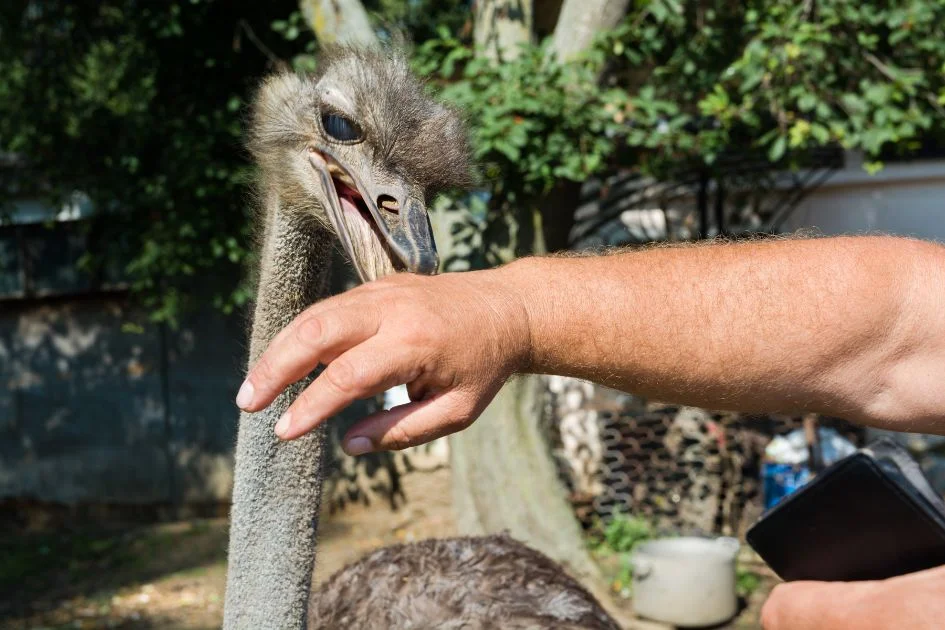
Ostriches can and often do bite by holding your hand or fingers in between their beaks.
Ostrich feeders are more at risk of this and should be careful while feeding them. If you also visit an ostrich at the zoo, do not stay too close.
Fortunately, the bite isn’t as risky as the monkey and even domestic dogs. All bites are painful, though, so exercise caution when close to an ostrich.
Its kick should also be avoided as the kick can kill large predators. Death by ostrich kicking is rare for humans, and it should remain that way.
How Do Ostriches Chew Without Teeth?

The direct answer is that they don’t. Ostriches can’t chew with the beak, and only swallows the food.
It is in the intestine that the chewing takes place, and the food is broken down before it gets digested.
To make this possible, ostriches chew rocks, pebbles, and other hard objects.
These objects are used by the intestine to “chew” the food. Ostriches regularly replace them by swallowing more pebbles and rocks.
What do Ostriches eat?
Ostriches are omnivores, capable of eating both plants and animals. Their diet is wide, and unlike some other birds that eat little and are choosy, ostriches have a large appetite.
They can eat plant roots, and seeds, little plants, and herbs leave. For animal nutrients, they prey on insects, reptiles, and spiders.
They are also able to stay long without water. While a human needs water multiple times a day, ostriches can survive without water for up to two weeks!
Other Interesting Facts About Ostriches
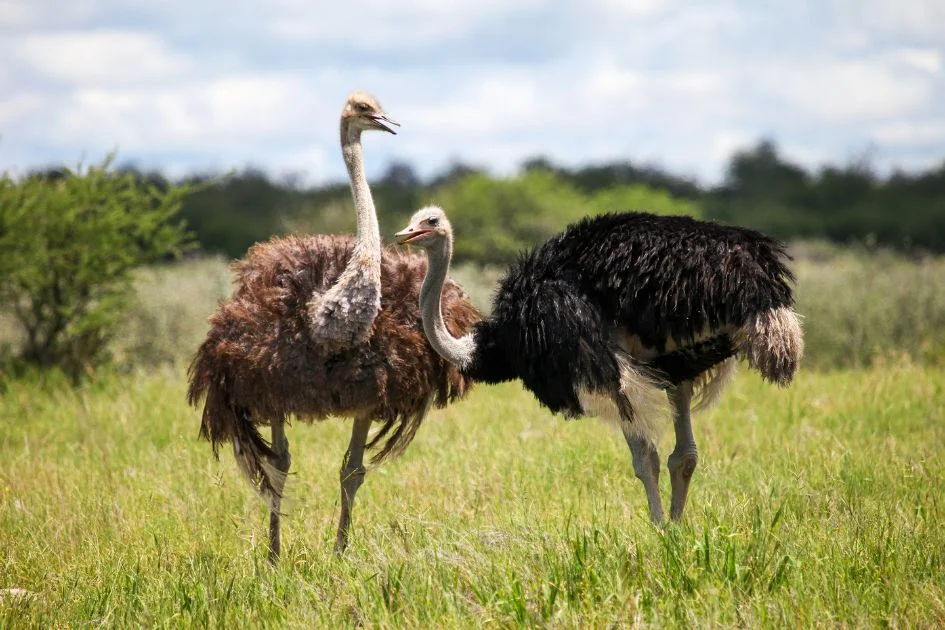
- Ostriches have a lot of predators, and it uses the beak as a form of protection against these predators. It can also use the fatal kick, or simply run away when the predator seems too strong for it.
- Adult ostriches aren’t always at risk, however. Only the younger ones find themselves vulnerable to predators. These predators include lions, hyenas, and jackals.
- Besides feeding and protection, ostriches use the beak to pick up objects that they use to build their nests.
- The ostrich is the world’s largest living bird and the fastest too. It also has the largest eggs, has three stomachs and both the male and female incubate eggs.
- Also, the idea of ostriches hiding their face in the sand has been disproved as an old myth.
Related Questions
Does an ostrich bite hurt?
While the ostrich bite isn’t as dangerous as that of dogs and some other mammals, its bite can still be painful.
Can you get killed by an ostrich?
Ostriches are not known to be at odds with humans, but if they feel threatened they can attack. A single kick from the Ostrich, with their powerful long feet and claws, is capable of disemboweling or even killing a person.
Can an ostrich be a pet?
Ostriches can be domesticated and even be kept as a pet, but it isn’t the right companion for the average, urban American.
There’s a lot to consider and know before owning an ostrich, and you’d even need a license in some places. The risk may not be worth it for many.
Are ostriches friendly or aggressive?
Ostriches can be both friendly and aggressive. Domestic ostriches are friendlier than wild ones, but both have been known to attack humans when they perceive a threat.
Will an ostrich chase you?
If an ostrich feels threatened by you, then it can chase you. It doesn’t chase a human because it considers the person prey, but because it feels threatened.
If you ever find yourself being chased by an ostrich, find a place to hide out of its sight. It is likely to lose interest that way.
Wrap Up
Ostriches are different from other birds in many ways, but contrary to speculations, they don’t have teeth.
What they have are strong beaks and a digestive system that breaks down food with the help of rocks the ostrich swallows.
This bird is an omnivore, and not the easiest bird to prey on because of the beak and its strong legs.
Featured Image Credit: Luka Kotnik/Getty Images
